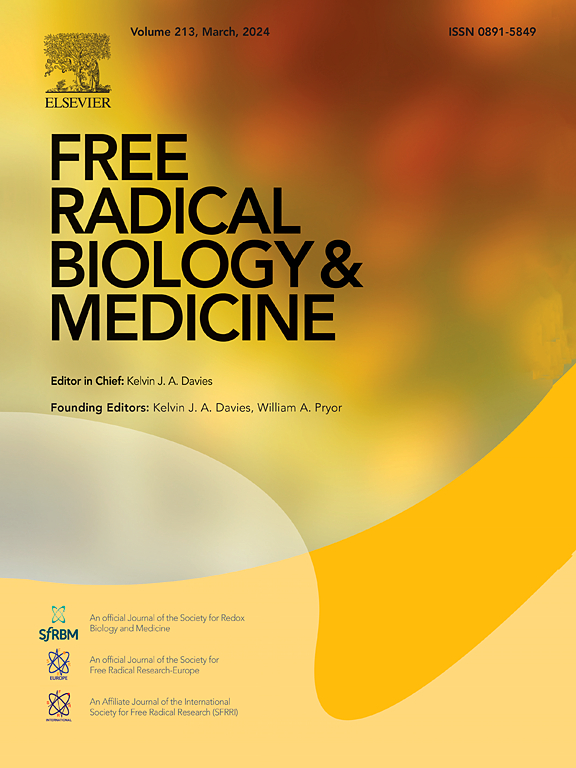The ferroptosis of sertoli cells inducing blood-testis barrier damage is produced by oxidative stress in cryptorchidism
IF 7.1
2区 生物学
Q1 BIOCHEMISTRY & MOLECULAR BIOLOGY
引用次数: 0
Abstract
Oxidative Stress (OS) is the main cause of damage to the Blood-Testis Barrier (BTB) in cryptorchidism, which seriously endangers male reproductive health. It is well known that the OS induced ferroptosis is an important cause of dysfunction in the body. However, it is still unknown whether BTB damage in cryptorchidism leads to ferroptosis of Sertoli cells. We establishing the cryptorchidism model through surgery to avoid the complex effects of drugs on the model animals, combined with in vitro culture of the primary Sertoli cells for validation, and the methods of immunofluorescence staining, Western blotting and Prussian blue staining were used to study the oxidative stress in cryptorchidism. The effects of ferroptosis of Sertoli cells inducing BTB damage caused by OS in cryptorchidism were analyzed. We found that the inhibition of Nrf-2/keap-1/HO-1 pathway resulted in decreased expression levels of Glutathione Peroxidase 4 (GPX4), Ferroportin 1 (FPN1), and increased expression of Ferritin light chain (FTL) protein. Our research further confirms that inhibiting ferroptosis reduced BTB damage by reflecting a decrease expression of Zonula Occludens protein 1 (ZO-1), Occludin and Claudin-11 protein caused by OS. In addition, we found that the testosterone (T) secretion disorders and the supplementation of T can alleviate the damage of the BTB in cryptorchidism, and this effect is achieved through the Androgen Receptor (AR). In conclusion, our study found that the inhibition of Nrf-2/keap-1/HO-1 pathway in testis and the reduction of Tight junction proteins (TJs) ZO-1, Occludin and Claudin-11 protein expression levels in cryptorchidic mice, indicated that the cryptorchidism triggering a serious reproductive disorder, and one of the important reasons is the OS induced ferroptosis of Sertoli cells, which ultimately leads to the damage of the BTB. This findings may have important implications in the field of male reproductive disorders.

求助全文
约1分钟内获得全文
求助全文
来源期刊

Free Radical Biology and Medicine
医学-内分泌学与代谢
CiteScore
14.00
自引率
4.10%
发文量
850
审稿时长
22 days
期刊介绍:
Free Radical Biology and Medicine is a leading journal in the field of redox biology, which is the study of the role of reactive oxygen species (ROS) and other oxidizing agents in biological systems. The journal serves as a premier forum for publishing innovative and groundbreaking research that explores the redox biology of health and disease, covering a wide range of topics and disciplines. Free Radical Biology and Medicine also commissions Special Issues that highlight recent advances in both basic and clinical research, with a particular emphasis on the mechanisms underlying altered metabolism and redox signaling. These Special Issues aim to provide a focused platform for the latest research in the field, fostering collaboration and knowledge exchange among researchers and clinicians.
 求助内容:
求助内容: 应助结果提醒方式:
应助结果提醒方式:


